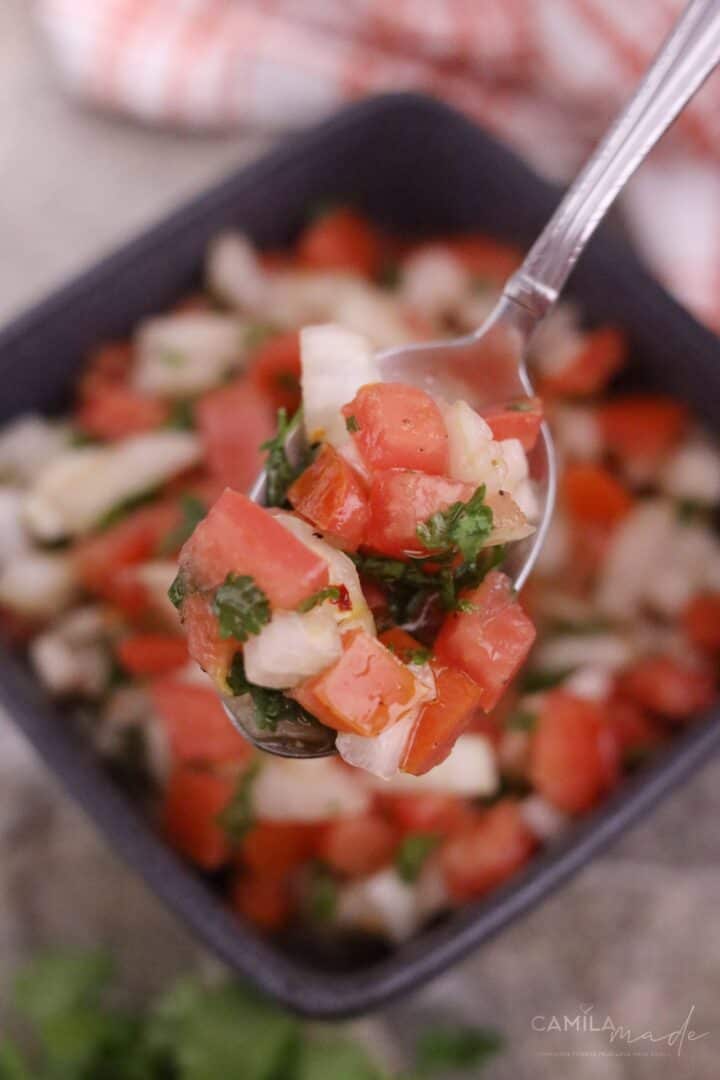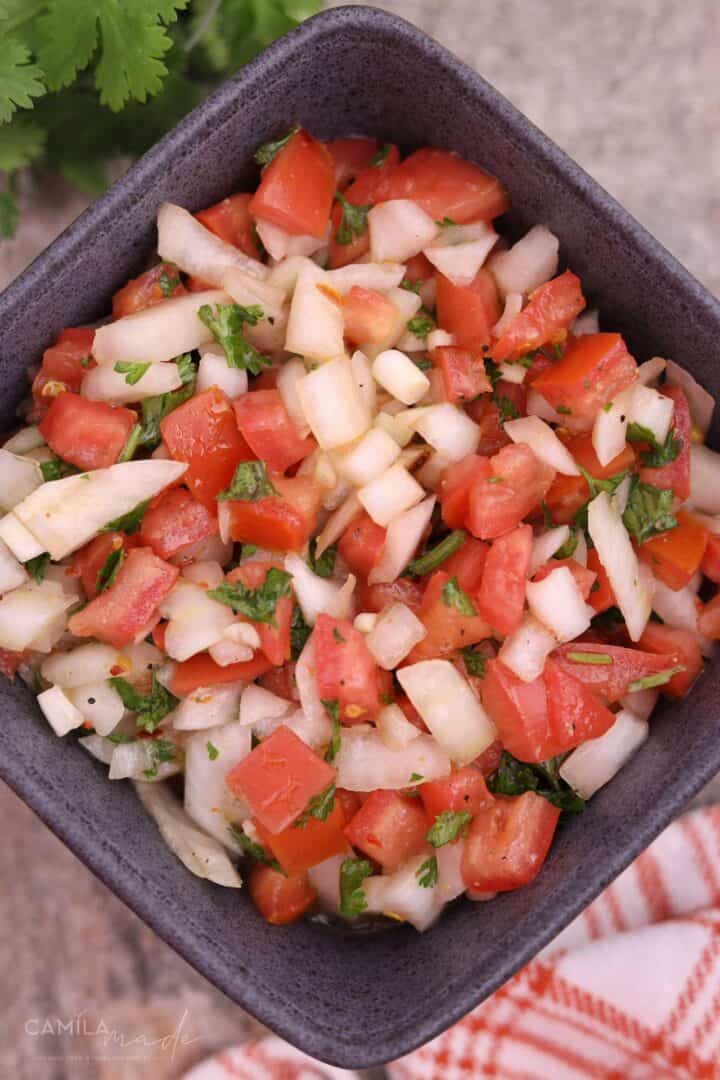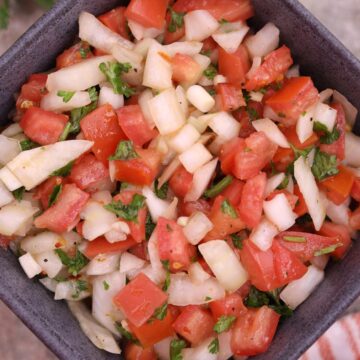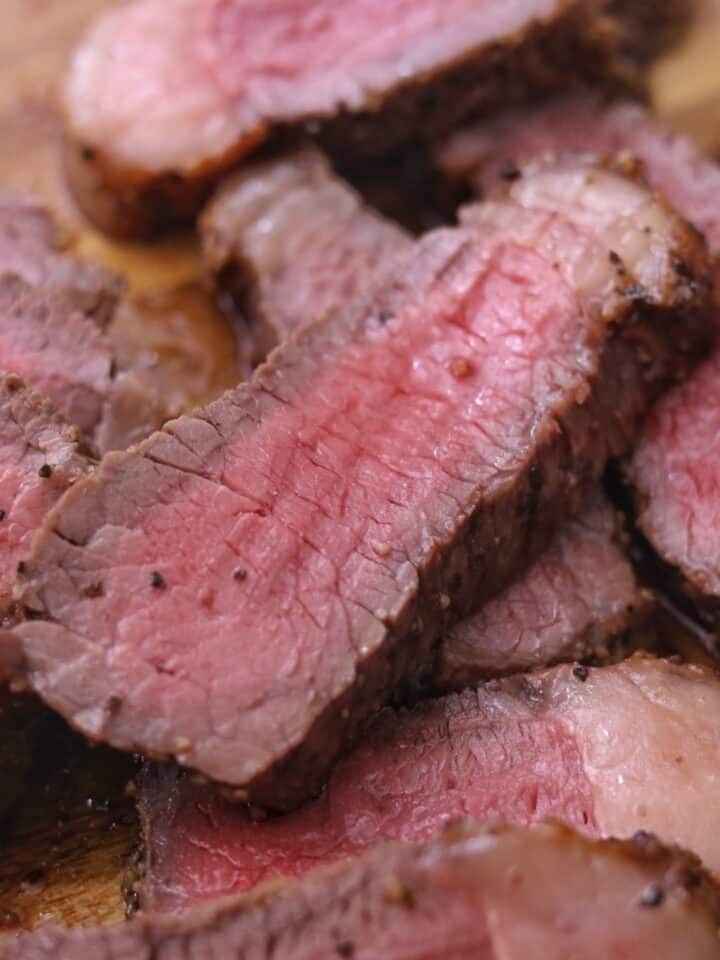Molho Vinagrete is a Brazilian condiment similar to Mexican Pico de Gallo but milder. It's made with fresh ingredients like chopped tomatoes and onions and a tangy oil-vinegar base.
It's a perfect complement to any Brazilian dish, especially churrasco. The key to the perfect Molho Vinagrete is finely chopping the tomatoes and onions, which adds a burst of flavor with every bite.
 Method at a Glance
Method at a Glance
Note: The full instructions are provided in the recipe card below.
- Combine Base Ingredients.
- Add Liquids.
- Season.
- Chill.
- Serve.
Tips and Advice
This Vinagrete gets even better when you let it chill, allowing the flavors to meld together.
See more Brazilian Recipes:
Recipe
Vinagrete
Ingredients
- 3 medium Plum Tomatoes , deseeded and diced small (or simply diced if you prefer not to remove the seeds)
- 1 large Onion , small diced
- ¼ cup fresh parsley , cilantro, or green onion, chopped
- 1 small fresh garlic , finely minced (optional)
- 1-½ tablespoons red wine vinegar or white vinegar Juice from 1 freshly squeezed lime or lemon
- 1-½ tablespoons water
- 6 tablespoons extra virgin olive oil or vegetable
- 1 teaspoon kosher salt , adjust to taste
- ½ teaspoon ground Black pepper , adjust to taste
- Optional: Red pepper Flakes , Malagueta oil, or hot sauce for added heat
Instructions
- In a small bowl, mix the chopped tomatoes, onion, cilantro, and minced garlic.
- Stir in the red wine vinegar, or lime juice, water, and olive oil.
- Season with salt and black pepper. Add a dash of Malagueta oil or hot sauce for a spicy kick, if desired.
- Cover the bowl and chill in the refrigerator for at least 1 hour. This step is crucial as it allows the flavors to meld and intensify.
- Before serving, taste your Vinagrete and make the final adjustments.
Notes
All nutritional information is based on third-party calculations and is only an estimate. Each recipe and nutritional value will vary depending on the brands you use, measuring methods, and portion sizes per household.







